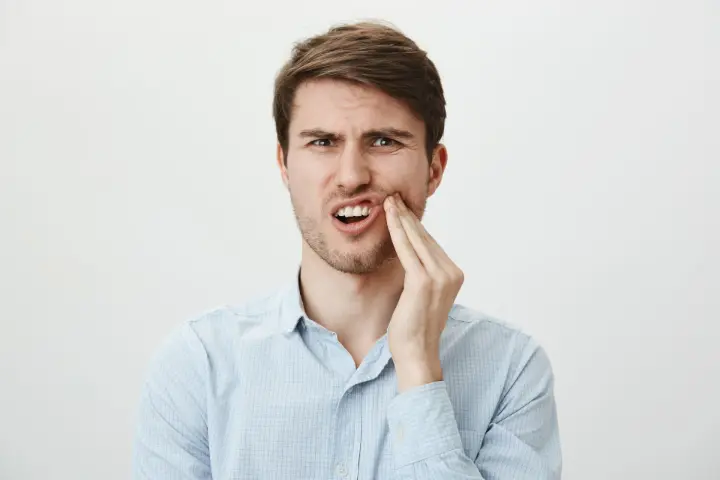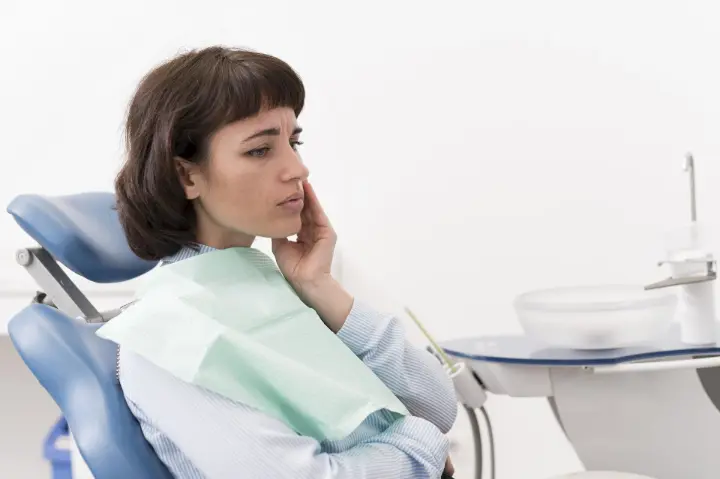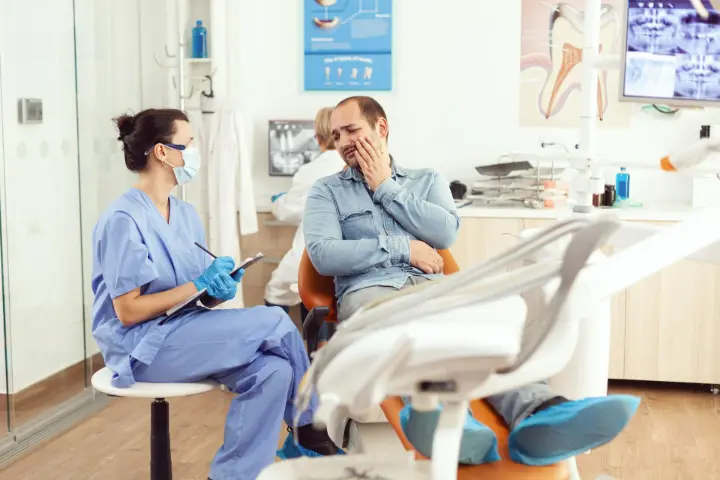Dental emergencies rarely occur at convenient times. That throbbing toothache might awaken you at 2 AM, or a crown might dislodge during an important business dinner. Perhaps your child's tooth gets knocked out during weekend sports, leaving you frantically searching for solutions when most dental offices are closed.
These situations demand immediate attention and proper response. At Vident Dental Clinic, we understand the urgency and stress that accompanies unexpected dental issues. This comprehensive guide will equip you with essential knowledge to handle common dental emergencies effectively until professional care becomes available.
Recognizing True Dental Emergencies
Not every dental problem constitutes an emergency. Understanding the difference between urgent situations requiring immediate attention and those that can wait for a scheduled appointment helps you make appropriate decisions during stressful moments.
Situations Requiring Immediate Attention
These conditions typically warrant emergency care:
- Severe, uncontrollable pain that doesn't respond to over-the-counter medication
- Significant trauma to the mouth or face resulting in broken or displaced teeth
- Uncontrolled bleeding from the mouth or gums
- Swelling that affects breathing or swallowing
- Knocked-out (avulsed) teeth, which have a limited window for successful reimplantation
- Broken teeth with exposed nerves causing extreme sensitivity
- Infections accompanied by fever, facial swelling, or difficulty swallowing
Non-Emergency Dental Issues
While uncomfortable, these situations typically can wait for a regular appointment:
- Minor chips without pain or sharp edges
- Lost fillings, crowns, or bridges without significant discomfort
- Mild toothaches that respond to over-the-counter pain relief
- Food trapped between teeth
- Broken orthodontic wires that aren't causing injury
When in doubt about the severity of your situation, contact our emergency line for guidance. It's always better to err on the side of caution when your oral health is concerned.
Emergency Response Guide for Common Dental Crises
The actions you take immediately following a dental emergency can significantly impact treatment outcomes. Here's how to handle the most common urgent situations:
Knocked-Out Tooth
A completely dislodged tooth represents one of the most time-sensitive dental emergencies. The window for successful reimplantation narrows dramatically after 30 minutes.
Immediate Steps:
- Handle the tooth only by the crown (the visible part), never touching the root
- Gently rinse it with milk or saline solution if visibly dirty (never scrub or use soap)
- Attempt to reinsert the tooth into its socket, facing the correct way
- If reinsertion isn't possible, store the tooth in one of these mediums (in order of preference):
- Specialized tooth preservation solution (available in some first aid kits)
- Cold milk
- Saliva (tucked in your cheek if the person is conscious and able)
- Saline solution
- Seek emergency dental care immediately – every minute counts
What Not To Do:
- Don't wrap the tooth in tissue or cloth, which can damage vital cells
- Avoid using tap water for storage, as its chemicals can harm root cells
- Never handle or clean the root surface
Severe Toothache
Intense dental pain often indicates inflammation or infection requiring prompt attention.
Immediate Steps:
- Rinse with warm saltwater (1/2 teaspoon salt in 8 oz water)
- Gently floss around the affected tooth to remove potential debris
- Apply a cold compress to the outside of your cheek for 20-minute intervals
- Take over-the-counter pain medication according to package directions (avoid placing aspirin directly on the gum tissue)
- Contact our emergency line for guidance and appointment scheduling
Warning Signs Requiring Urgent Care:
- Pain accompanied by swelling in the face or neck
- Fever or general malaise
- Difficulty swallowing or breathing
- Pain that radiates to the ear, jaw, or neck
Broken or Chipped Tooth
The appropriate response depends on the severity of the fracture and presence of pain.
Immediate Steps:
- Rinse your mouth with warm water to clean the area
- Apply a cold compress to reduce swelling
- Cover any sharp edges with dental wax (available at pharmacies) or sugar-free gum
- For significant breaks with pain:
- Take over-the-counter pain medication as directed
- Contact our emergency line immediately
- For minor chips without pain:
- Schedule a regular appointment within a few days
Preservation Tips:
- Save any broken fragments and bring them to your appointment
- Avoid chewing on the affected side
- Temporarily cover exposed areas with over-the-counter dental cement if sensitive
Lost Crown or Filling
While not always painful, lost restorations leave teeth vulnerable to further damage and sensitivity.
Immediate Steps:
- Locate the crown if possible
- Clean the inside gently with toothbrush and water (no toothpaste)
- For a lost crown:
- Apply dental cement, denture adhesive, or clove oil to the tooth
- If possible, slip the crown back over the tooth after applying the temporary adhesive
- For a lost filling:
- Place sugar-free gum or over-the-counter dental cement in the cavity
- Schedule an appointment within 1-2 days
Temporary Relief for Sensitivity:
- Apply clove oil to the exposed area with a cotton swab
- Use sensitivity-formulated toothpaste on the area
- Avoid temperature extremes with food and beverages
Dental Abscess
An abscess indicates infection and requires prompt professional treatment to prevent spread.
Immediate Steps:
- Rinse frequently with mild saltwater solution
- Take over-the-counter pain medication as directed
- Apply cold compresses to the outside of the face
- Contact our emergency line immediately – dental abscesses can lead to serious systemic infections if untreated
Warning Signs of Spreading Infection:
- Fever or chills
- Facial swelling, especially if extending toward the eye
- Difficulty swallowing or breathing
- Tender, swollen lymph nodes under the jaw
Soft Tissue Injuries
Injuries to the lips, gums, cheeks, or tongue often appear worse than they are due to rich blood supply, but still require proper care.
Immediate Steps:
- Rinse gently with diluted hydrogen peroxide or saltwater
- Apply direct pressure with gauze or clean cloth for 15-20 minutes
- For continued bleeding after pressure:
- Apply a cold compress to the outside of the affected area
- Seek emergency care if bleeding doesn't subside within 30 minutes
- For deep cuts or punctures:
- Visit an emergency department if sutures may be required
When to Seek Immediate Medical Attention:
- Lacerations longer than 1/2 inch
- Gaping wounds that don't close naturally
- Foreign objects embedded in soft tissue
- Inability to control bleeding after 30 minutes of pressure
Building Your Dental Emergency Kit
Preparation can make a significant difference during dental emergencies. Consider assembling a kit containing:
- Save-a-Tooth kit or small container with lid for tooth preservation
- Gauze pads for controlling bleeding
- Small container of saltwater solution (or salt packets to mix with water)
- Dental wax for covering sharp edges
- Temporary dental cement (available at pharmacies)
- Cotton balls and swabs
- Small dental mirror
- Latex or vinyl gloves
- Over-the-counter pain relievers (acetaminophen or ibuprofen)
- Cold pack (instant-activation type)
- Vident Dental Clinic's emergency contact information
Keep this kit accessible in your home and consider a travel-sized version for vacations or sports events.
Vident's Emergency Care Protocol: Immediate Support When You Need It Most
At Vident Dental Clinic, we've developed comprehensive protocols to address dental emergencies promptly and effectively.
Our Emergency Response Commitment
We understand that dental emergencies create significant stress and discomfort. Our emergency care system includes:
- Same-day appointments for true dental emergencies during regular hours
- Extended hours on select days to accommodate urgent situations
- Emergency phone consultation with a dental professional
- Clear after-hours protocol with access to on-call assistance
- Seamless coordination with specialists or hospital care when needed
Digital Advantage in Emergency Situations
Our investment in advanced technology provides distinct advantages during emergencies:
- Digital radiography delivers immediate diagnostic images with minimal radiation
- 3D imaging capabilities for comprehensive assessment of complex trauma
- Electronic records system provides instant access to your dental history
- Digital impression technology facilitates rapid creation of temporary restorations
Post-Emergency Follow-Up
Our care extends beyond the immediate emergency situation:
- Comprehensive evaluation of underlying factors contributing to the emergency
- Development of preventive strategies to reduce future emergencies
- Thoughtful explanation of treatment options with transparent cost information
- Coordination with your insurance provider to maximize benefits
Prevention: The Best Emergency Strategy
While some dental emergencies result from unavoidable accidents, many can be prevented through regular care and precautionary measures.
Routine Preventive Care
Regular dental visits allow for early identification of potential problems before they escalate to emergencies:
- Biannual examinations to detect early signs of decay or infection
- Professional cleanings to prevent gum disease and related complications
- Diagnostic imaging to identify issues invisible to the naked eye
- Occlusal analysis to address grinding or bite issues that could lead to fractures
Protective Measures for Active Lifestyles
For those participating in sports or high-risk activities:
- Custom-fitted mouthguards provide superior protection compared to over-the-counter options
- Sport-specific designs account for different impact risks across various activities
- Regular evaluation of existing mouthguards for proper fit and effectiveness
Addressing Underlying Risk Factors
Certain conditions increase emergency risk and warrant preventive intervention:
- Bruxism management through night guards and stress reduction techniques
- Cracked tooth syndrome identification and protective restoration
- Compromised restorations replacement before failure occurs
Special Considerations for Different Age Groups
Emergency prevention and management varies across life stages.
Children and Adolescents
Young patients present unique emergency considerations:
- Primary (baby) teeth injuries require different approaches than permanent teeth
- Growth and development factors influence treatment decisions
- Behavioral management becomes crucial during emergency situations
- Parent education about proper response to common childhood dental injuries
Older Adults
Aging brings specific emergency risk factors:
- Medication interactions that may complicate emergency treatment
- Increased incidence of root fractures due to age-related changes in tooth structure
- Prosthetic device complications requiring specialized emergency care
- Chronic condition management during dental emergencies
When to Seek Emergency Room Care vs. Dental Care
Understanding when to visit a hospital emergency department versus a dental office can save critical time in serious situations.
Seek Hospital Emergency Care When:
- Facial trauma involves potential fractures of the jaw or facial bones
- Swelling affects breathing or swallowing
- Uncontrolled bleeding persists despite pressure
- Signs of severe infection include high fever and significant facial swelling
- The patient has lost consciousness or exhibits altered mental status
Seek Emergency Dental Care When:
- Tooth damage or loss is the primary concern
- Pain is severe but not accompanied by breathing difficulties or altered consciousness
- Swelling is limited to the immediate area around a tooth
- Prosthetics (dentures, bridges, implants) have been damaged or dislodged
Conclusion: Prepared, Not Scared
Dental emergencies may be unpredictable, but your response doesn't have to be. With proper knowledge and preparation, you can take appropriate action that may save your smile, reduce discomfort, and improve treatment outcomes.
At Vident Dental Clinic, we're committed to providing prompt, compassionate emergency care when you need it most. Our team understands the stress and uncertainty that accompany unexpected dental problems, and we've designed our emergency protocols to provide reassurance and effective solutions.
Remember to program our emergency contact number into your phone: [ 036461028 ]. This simple preparation step can save valuable time when minutes matter.
Don't hesitate to contact us with any questions about dental emergencies or to schedule a comprehensive examination to identify and address potential problems before they escalate into urgent situations.
This article provides general guidance for dental emergencies but does not replace professional advice. Always contact a dental professional immediately in emergency situations.


